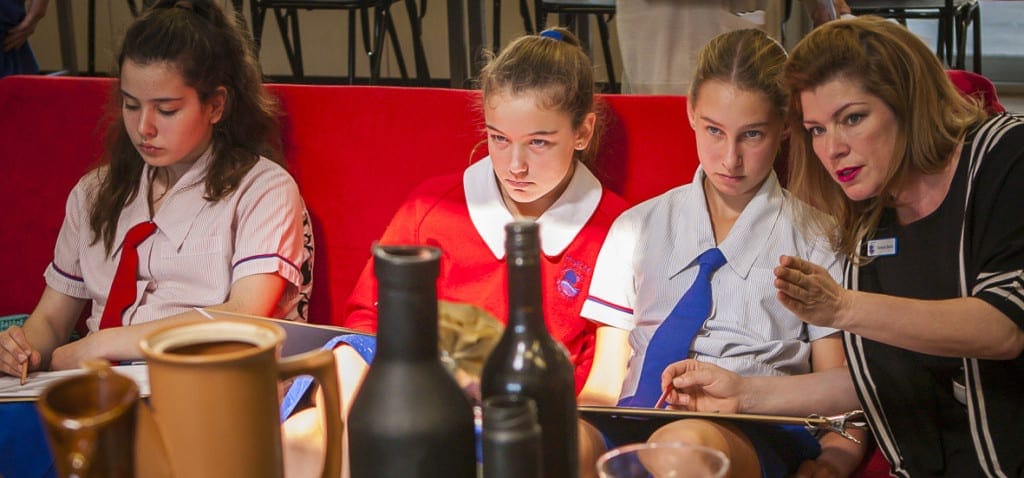When we foster the ability in our young people to construct something tangible from their imaginations, we prepare them for a career yet to be defined…
Is Art a key factor in our children’s future success?
Art is one of the most significant historical records of human society. It shows us the history and evolution of culture. Knighted in 2003 for his enormous inquiry into the significance of creativity in the educational system and the economy, Sir Ken Robinson stated, “Creativity is as important as literacy and numeracy,” and that, “We don’t grow into creativity, we grow out of it. Or rather, we get educated out if it.” So, why is Art still a contentious subject in education? Well, there are a few reasons.
Few people feel they are good at Art
When asked, most non-artists boldly state that they “can’t even draw a stick figure!” Many feel that gallery art defies understanding and even question Art’s overall purpose. This limited understanding of the potential of Art has led to widespread apprehension. The mindset that “you have to be born with it” persists. For example, adults do not advise against studying Mathematics because their child does not innately comprehend complex trigonometry. We understand that learning complex skills takes time. Yet many adults approach artistic skill as unteachable. Compounding this idea is the outdated notion that Art cannot pave the way to a well-paid or rewarding career.
A varied approach
Unlike traditional subjects, Art is taught differently across primary schools; some students are taught daily by accredited Art teachers, while other students are offered rudimentary, monthly activities. This leads to the impression that Art is an optional endeavour, when in fact the thought processes inherent in Art underpin those required in every other subject. Recently, Christine Marmé Thompson, Penn State Professor of Art Education said, “Seeing Art as expendable indicates a deep misunderstanding of the role it plays at the center of learning.”
As toddlers, we are all artists. We are slowly taught out of our originality, by well-meaning adults, who offer praise when a child stops ‘scribbling’ and begins drawing symbols we easily recognise. For adults who underwent this process themselves, it can be difficult to know how to support their children’s artistic endeavours, particularly when their children demonstrate talent.
So, why is Art so important?
Primary school Art is essential in building capacity. Secondary school Art acts as a gateway to self-reliance in adulthood. The advantages of what children can learn by practicing Art cannot be underestimated; they rapidly build a growth mindset. Their motor skills, decision-making and problem solving skills are enhanced, leading to improved confidence, flexibility and, of course, creativity. Art also allows young people the time to relax and engage with peers, teaching them that work can be pleasant and rewarding. Like reading books, walking in nature, praying, or meditating – Art allows children to be mindful. A visit to GOMA, for example, will expose children to the world of possibilities that lay in the creative arts.
Art’s place in our future cannot be underestimated. Several popular studies point to the likelihood that 65% of the jobs available by 2030 are yet to be invented. Our children face the challenge of preparing for careers that may not exist yet! In many circles, Art has been tipped as the primary subject needed to build the capacity required in these careers.

How can we support our children in Art?
Like developing any skill, acquiring knowledge requires persistence. Remind children that frustration is a great indicator that they are learning something new, and if they persevere, they will naturally improve to the next level. Some questions we can ask children are:
- “Why have you used that colour?”
- “What do those lines/shapes mean?”
- “Tell me about what you’ve drawn here.”
These types of questions help to avoid the verbal trap of praising visual choices, and show that we value imagination. Listen to their intended message and respond with enthusiasm towards their originality, persistence and creativity.
Art is the future
Each new skill acquired, in Art and in life, will stay with a child through to adulthood. When we foster the ability in our young people to construct something tangible from their imaginations, we prepare them for a career yet to be defined. Our world is facing change more rapidly than at any other time in history and schools are demonstrating a shift in educational priorities to meet this change.
How can parents prepare their children for the future? The simple answer is to encourage creativity at every opportunity. If supported without judgement, Art offers solace and allows a palpable emotional communication for children, while preparing them for the amazing future we have all yet to imagine. Even if we do not feel creative ourselves, it is in everyone’s best interests to help children mine their creativity, for them and for all of our futures.
Tamara Gerlic, Art Teacher, Hillbrook Anglican School. www.hillbrook.qld.edu.au
This article was published in Issue 21 of our print magazine, April/May 2017.

